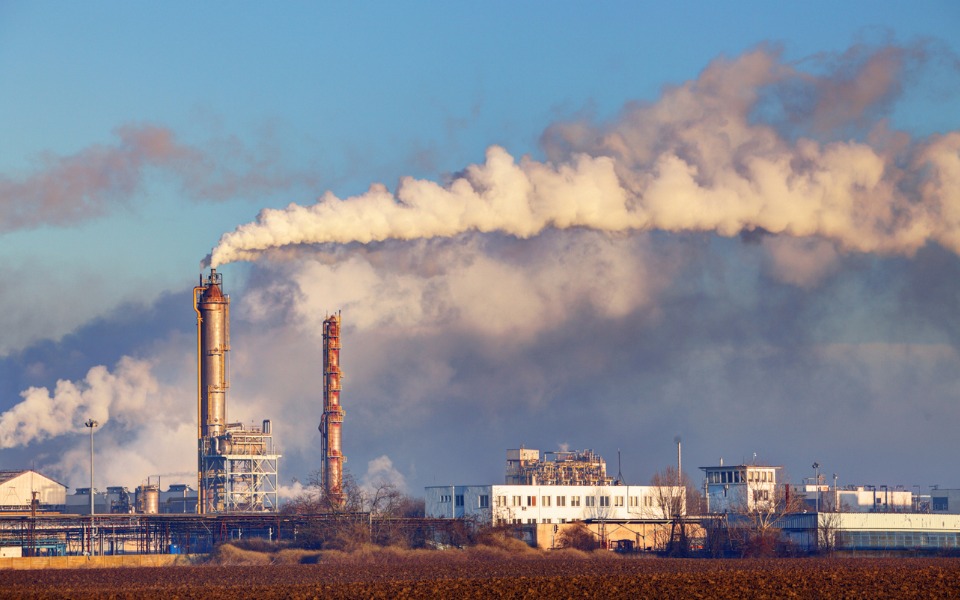
IITM conducts study to understand role of aerosols in global climate, local weather
A new study conducted by atmospheric researchers at the Indian Institute of Tropical Meteorology (IITM), Pune is expected to provide better insight into the processes involved in the formation and aging of aerosol, which would also help better understanding of the aerosol-cloud condensation nucleation (CCN) activation properties and cloud formation processes.

A new study conducted by atmospheric researchers at the Indian Institute of Tropical Meteorology (IITM), Pune is expected to provide better insight into the processes involved in the formation and aging of aerosol, which would also help better understanding of the aerosol-cloud condensation nucleation (CCN) activation properties and cloud formation processes.
Aerosols play an important role in cooling and heating the Earth’s climate. Atmospheric aerosol, also known as particulate matter (PM), is a suspension of fine solid particles or liquid droplets in the air.
The CCN is a subset of hygroscopic aerosol particles that nucleate water drops at supersaturations less than one percent.
Common perception about aerosols is that these are produced from hairspray or deodorant. Aerosols, however, can be any microscopic particles suspended in the atmosphere.
They can be man-made, like from burning fossil fuels and sulfate emissions, or naturally occurring from sources such as volcanic eruptions, bushfires, and sea spray. They can be solids such as smoke and sea salt, liquids such as water, or gases such as Sulphur dioxide (SO2).
They can also be formed through the photo-oxidation of gases (biogenic and anthropogenic) and subsequent partitioning.
Without aerosols in the atmosphere, the Earth will heat up quicker than usual. Interaction of the sub-micron aerosol particles with clouds help reflect more of the Sun’s energy into space, implying that their overall role is to cool the Earth. This also modifies cloud properties (cloud droplet size distribution), which in turn alters the rain formation processes.
However, this cooling effect of aerosols is made ineffective to a great extent due to the warming effect of increased greenhouse gases. This is one of the reasons the Earth is heating up more rapidly.
A new study on aerosol variability, its formation, and ageing in relation to different meteorological parameters at a high altitude location in South-West India (Mahabaleshwar) was conducted by IITM.
The study found that with the increase in Relative Humidity (RH) during the summer as well as winter season, there was also an increase in mass concentration and fraction of aerosol components such as sulfate, nitrate, and chloride.
The IITM study revealed that the high RH condition is mostly associated with lower temperatures, which set the environment up for the gas phase nitrate to be partitioned into the particle phase. The sulfate, which is one of the major components in determining the water uptake ability of sub-micron aerosol, is observed to be increased significantly through heterogeneous aqueous phase oxidation.
There is an increase in concentration of chloride, organic compound and sulfate due to anthropogenic (man made pollutant) emission at high RH condition.
It was also found during the study that when the atmospheric temperature increases by a fraction of 17 to 24 degrees Celsius (during monsoon season), there was an increase of concentration of sulfate by 88 percent. The aged component of organics was also observed to be enhanced significantly with the increase in temperature. This is indicative of the dominance of photochemical ageing processes during high-temperature conditions.
The extent of photochemical ageing was found to be higher during the summer season (mean temperature ~25.4 ± 2.6 degrees Celsius) as compared to winter (mean temperature ~20.5 ± 2.6 degrees Celsius). Thus, the overall atmospheric aerosol condition is related to high-temperature conditions as high temperature results in higher photochemical oxidation.
A technique used in this study, which is known as the nonparametric wind regression analysis, revealed that the mass concentration of aerosol components during winter was majorly contributed by distant sources from the northeast direction of Mahabaleshwar, while during the summer, the local sources were more dominant.
This study was conducted to understand the influence of aerosols in global climate as well as their role in the daily local weather. Different environmental variables and aerosol properties can have positive as well as negative effects and thus result in uncertainties in the external forcing of the climate system.
Led by Subrata Mukherjee, the research team comprised Vyoma Singla, Guman Singh Meena, Mohammad Yusuf Aslam, Pramod Digambar Safai, Pallavi Buchunde, Anil Kumar Vasudevan, Chinmay Kumar Jena, Sachin Dinkar Ghude, Kundan Dani and Govindan Pandithurai of IITM, Pune. The research paper is published in the Journal of Environmental Pollution.
(With inputs from India Science Wire)


